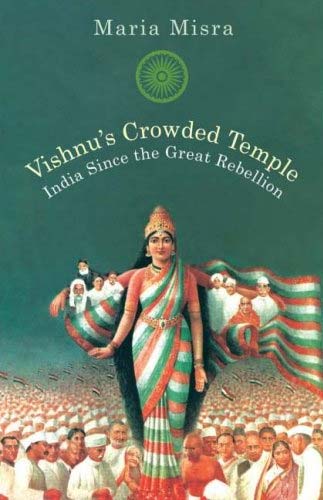Book Review: Vishnu’s Crowded Temple
By Rudrangshu Mukherjee | Oct 15, 2007

VISHNU’S CROWDED TEMPLE:
INDIA SINCE THE GREAT REBELLION
By Maria Misra
This book, written by an Oxford don, is a howler-seeker’s delight. Turning to the bibliography, I found a reference to T. Roy, A Countryside in Revolt: Bulandshahr District, 1857. The reference is to The Politics of a Popular Uprising: Bundelkhand in 1857-58. Has Maria Misra ever set eyes on this book, let alone ever read it?
For me this set the register of the book: pedestrian and pretentious; ill-informed and ignorant. It bristles with egregious errors of which most undergraduates studying Indian history would be ashamed. The scholarship is so shoddy that it is difficult to believe that the author ever trained as a historian; that she now trains others makes one shudder.
Lest you think I am exaggerating, allow me to give you a sample of Maria Misra’s knowledge of Indian history.
She doesn’t know the spelling of the name of Dadabhai Naoroji: she writes Dhadabhoy. She consistently writes garibhi for garibi, thus rendering the word meaningless. In her hands, Mahatma Gandhi’s classic text, Hind Swaraj becomes Hind Sawaraj. She obviously has no clue about the meaning of swaraj. According to her, Gandhi spoke of “Ram’s Raja", thus confusing raja (king) with rajya (kingdom). Gandhi, as most educated people know, spoke of ramrajya. Misra makes shakhas into shakras and confuses, again and again, charkha with chakra. In another show of great erudition, she speaks of Vishnu’s sundarshana chakra!
She tells her readers that Ramlila is based on a 16th-century text. Valmiki’s Ramayan is not a name to her. Her ignorance of the epics is manifest when she writes of Bankimchandra, “In his Krishnacharita [the name of the essay is actually “Krishnacharitra”], he reinvented the bucolic and erotic child-god Krishna as a heroic warrior-politician, a battling saviour figure.’’ Bankim reinvented nothing. He merely interpreted the figure of Krishna as depicted in the Mahabharat and the Gita. Readers who know Bengali or Sanskrit will be delighted to learn from Misra that Ingrajstotra translates as “Hymn to the babu’’. It is actually “Hymn to the English”. Whoever knew, before it was revealed by Misra, that the king, Harishchandra, was “a manifestation of Krishna’’?
She has every right to describe P.C. Mahalanobis as a dictator in the Indian Statistical Institute but to say that he came under a cloud is to move from opinion to libel. Anyway, what authority does Misra, who thinks the ISI was established near the Botanical Gardens, have to express any opinion on the ISI and its founder? The ISI was founded in Presidency College and it was never relocated to New Delhi.
Her references to another man of learning are equally startling. Amartya Sen, and everyone else, will be amused to know from Misra that Sen trained at the Delhi School of Economics. Most of us know that Sen only taught there.
How can one take such a book seriously? How can Allen Lane publish this book? More importantly, how can Maria Misra hold a job at Oxford University?















